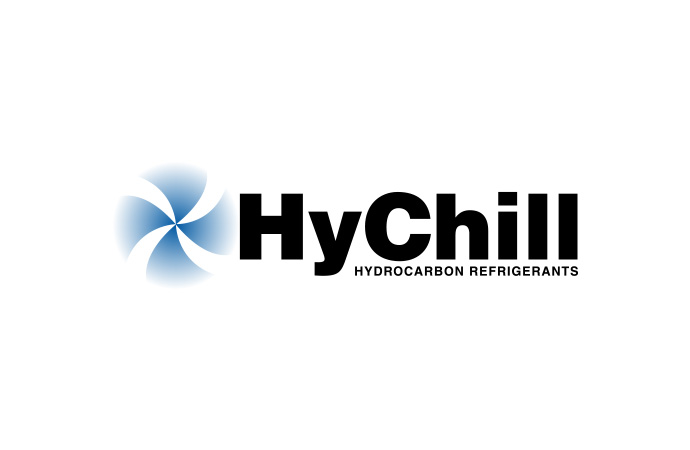A scientific report has spurred great momentum on how to tap HFCs if we are to avoid the worst effect of climate change in the coming decades. The findings show that if no new regulations are adopted, HFCs could equal 45% of CO2 emissions by 2050. Hydrocarbons and systems such as Greenfreeze were quoted as proven alternatives to HFCs.

According to the findings, the production and consumption of HFCs could be responsible for up to 45% of CO2 emissions by 2050. With the UN Copenhagen global climate deal only a few months away, increased emphasis must now be put on ways to hamper HFCs and promote hydrocarbon systems, such as Greenfreeze.
Alarming increase in HFCs negate any global effort to tackle climate change
"Dramatically cutting carbon dioxide emissions (…) is central to delivering a stabilization of the atmosphere as outlined by the assessments of the IPCC. But there are other low hanging fruit in the climate change challenge and this new scientific paper spotlights one of them – HFCs." Achim Steiner, UN Under-Secretary General and UNEP Executive Director, said in reaction to the findings.
The study shows that if business-as-usual models are kept going, HFCs could equal nine gigatonnes equivalent to around 45% of total CO2 emissions by 2050. This amount is far greater than those expected in previously drawn scenarios, such as those by SRES and IPPC/TEAP.
This is due to increasing demand in developed and developing countries, especially in Asia, for refrigeration, air-conditioning and insulating foam products. The scenario outlined in the study is based on an assumption that no new regulations are adopted to counter the increase in HFCs. Whilst proven technologies such as Greenfreeze are still subject to a ban in the US, it is now time for a global re-assessment of HFCs and strong incentive mechanisms to be adopted for alternatives such as hydrocarbon systems.
International agreement needed to avert worse effects of global warming
Guus Velders from the Netherlands Environmental Assessment Agency, the lead author of the study, said that HFCs present a significant threat to the world's efforts to stabilise climate emissions.
With international Copenhagen climate agreement only a few months ahead to regulate emissions of six greenhouse gases including carbon dioxide and HFCs, international efforts should be put on a concerted and ambitious scheme to avoid a surge in HFCs.
Swift action to freeze and reduce HFCs could buy the world the equivalent of a decade's worth of carbon dioxide emissions according to Steiner. To which Kert Davies, Greenpeace US Research Director, added that technologically and economically market-ready replacements to HFCs are ready for deployment provided adequate incentives are given.
Ozone-friendly substances become climate enemies
The study based its findings on the projected response to regulation of ozone depleting gases under the Montreal protocol. The scenario is based on current HCFC consumption patterns of replacements of HCFCs by HFCs, and GDP growth.
The Parties to the Montreal Protocol agreed to cut production and consumption of HCFCs in developing countries by 35% in 2020 and 67.5% in 2025 whilst developed countries agreed to phase down HCFCs by 75% in 2010 and then 100% by 2020.
As HFCs have until now been used to replace CFCs/HCHCs in most applications, the lack of further regulation would lead to the above-mentioned scenario.
Alarming increase in HFCs negate any global effort to tackle climate change
"Dramatically cutting carbon dioxide emissions (…) is central to delivering a stabilization of the atmosphere as outlined by the assessments of the IPCC. But there are other low hanging fruit in the climate change challenge and this new scientific paper spotlights one of them – HFCs." Achim Steiner, UN Under-Secretary General and UNEP Executive Director, said in reaction to the findings.
The study shows that if business-as-usual models are kept going, HFCs could equal nine gigatonnes equivalent to around 45% of total CO2 emissions by 2050. This amount is far greater than those expected in previously drawn scenarios, such as those by SRES and IPPC/TEAP.
This is due to increasing demand in developed and developing countries, especially in Asia, for refrigeration, air-conditioning and insulating foam products. The scenario outlined in the study is based on an assumption that no new regulations are adopted to counter the increase in HFCs. Whilst proven technologies such as Greenfreeze are still subject to a ban in the US, it is now time for a global re-assessment of HFCs and strong incentive mechanisms to be adopted for alternatives such as hydrocarbon systems.
International agreement needed to avert worse effects of global warming
Guus Velders from the Netherlands Environmental Assessment Agency, the lead author of the study, said that HFCs present a significant threat to the world's efforts to stabilise climate emissions.
With international Copenhagen climate agreement only a few months ahead to regulate emissions of six greenhouse gases including carbon dioxide and HFCs, international efforts should be put on a concerted and ambitious scheme to avoid a surge in HFCs.
Swift action to freeze and reduce HFCs could buy the world the equivalent of a decade's worth of carbon dioxide emissions according to Steiner. To which Kert Davies, Greenpeace US Research Director, added that technologically and economically market-ready replacements to HFCs are ready for deployment provided adequate incentives are given.
Ozone-friendly substances become climate enemies
The study based its findings on the projected response to regulation of ozone depleting gases under the Montreal protocol. The scenario is based on current HCFC consumption patterns of replacements of HCFCs by HFCs, and GDP growth.
The Parties to the Montreal Protocol agreed to cut production and consumption of HCFCs in developing countries by 35% in 2020 and 67.5% in 2025 whilst developed countries agreed to phase down HCFCs by 75% in 2010 and then 100% by 2020.
As HFCs have until now been used to replace CFCs/HCHCs in most applications, the lack of further regulation would lead to the above-mentioned scenario.
MORE INFORMATION
Related stories






